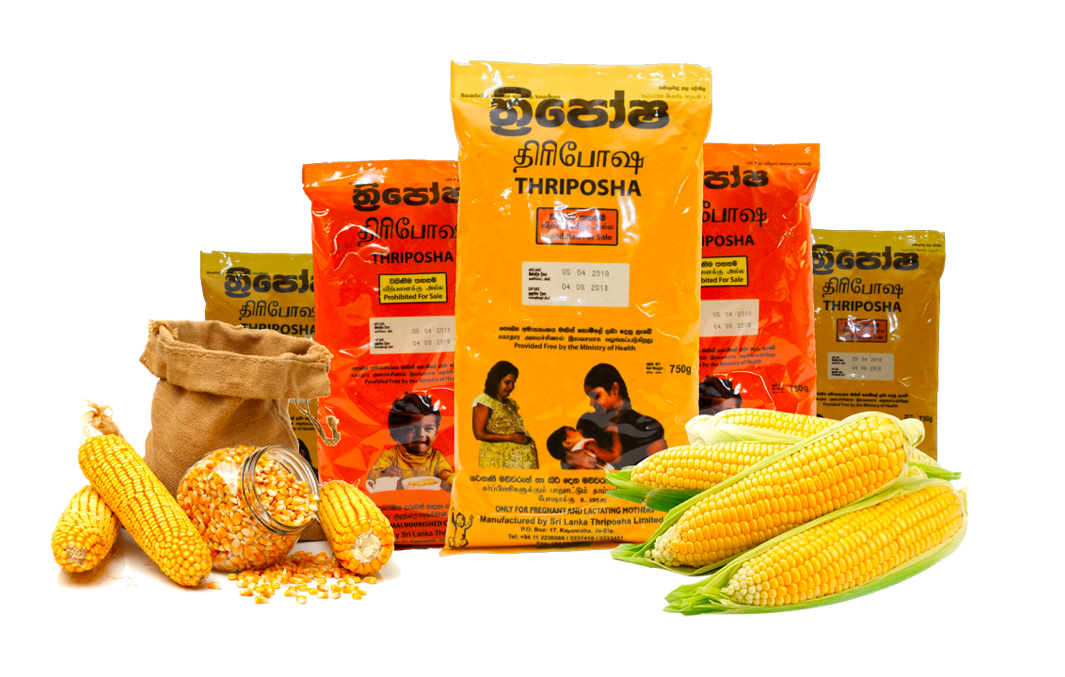Aflatoxins in Thriposha put the health of children and pregnant women at risk
Posted on November 6th, 2024
by Arundathie Abeysinghe Courtesy PIME Asia News
Several samples of a free, ready-to-eat, cereal- and legume-based food meant to “eradicate malnutrition” in Sri Lanka have been recalled. The Health Sciences Institute in Kalutara detected the mycotoxins above permitted levels last August. The lack of suitable storage is among the main causes.

Colombo (AsiaNews) – Aflatoxins exceeding permitted levels were detected by the Health Sciences Institute in Kalutara, Western Province, in some samples of Thriposha, a highly nutritious food provided for free in Sri Lanka.
The cancer-causing mycotoxins, which are produced by fungi, can cause liver cancer, and develop before and after harvest, especially in cereals like corn.
Thriposha is a triple nutrient that provides energy, protein and micronutrients. The pre-cooked “ready-to-eat” cereal- and legume-based supplement is provided to children and pregnant women from low-income groups.
The Public Health Inspectors (PHI) union raised the alarm after samples of Thriposha contaminated with aflatoxins were tested on 20 August, with a report on August 24.
The union informed the relevant authorities on 27 August, and the distribution was halted on 6 September. The recall concerns four districts – Colombo, Gampaha, Puttalam and Kegalle – with “near-expiry-date” Thriposha.
About 245 master bags” out of 451 were recalled in Colombo, 202 out of 239 were rejected in Kegalle, and 99 out of 250 were collected in Puttalam, while a stock of 150 packs was not distributed.
According to the Family Health Bureau (FHB), Thriposha is helpful to cater to nutritional deficiencies that cannot be fulfilled by the main diet.” For this reason, pregnant females or infants with nutritional deficiencies are provided two 750g packets of Thriposha each per month free of charge through the national nutritional programme.”
Consuming three table spoons of Thriposha daily, in addition to the three main meals is adequate as a combination of energy, protein and micronutrients as a ready-to-eat cereal-based food provided to foster a healthier nation and to eradicate malnutrition.”
As Deepthi Kularathna, chairman of Thriposha Limited, noted at a press briefing in Colombo, last week, There was a small amount with a high level of aflatoxin in some Thriposha packets.’’
The main causes of their presence were the lack in polythene packaging for some products, lack of suitable storage at distribution sites such as the Medical Officer of Health offices, and the lack of modern silos at the factory, as well as some other, small flaws in the “system”.
According to sources in the Auditor General Department, operating inefficiencies at the factory, lower production, including, the procurement plan and procurement time schedule had not been prepared properly.’’
Currently, 1.6 million packets are produced every month amid corn sourcing (importing and domestic supply) constraints.
It is necessary to alert people considering that the fungus puts the lives of mothers, the unborn, and children under five years old at grave risk,” said nutritionists Kanishka Bandara and Achala Samarasekara speaking to AsiaNews.
For pregnant females and mothers, the aflatoxin contamination level should not exceed 30 parts per billion. A small black dot in the grain of corn causes aflatoxins.
According to literature from the European Food Safety Agency (EFSA), aflatoxins are mycotoxins produced by two species of Aspergillus, a fungus, known to be genotoxic and carcinogenic.
For corn, to be subjected to sorting or other physical treatment, before human consumption or use as an ingredient in foodstuffs, the European Commission has set a maximum level of 10 µg/kg for the sum of B1, B2, G1 and G2 aflatoxins,” Kanishka and Achala said.
Aflatoxin B1 is absorbed in the small intestine and distributed to the liver. B1, G1 and M1 are cancer-causing when delivered orally through the diet. Aflatoxins can be present in foods such as groundnuts, corn, rice, figs and cocoa beans due to fungal infection before and after harvest.”